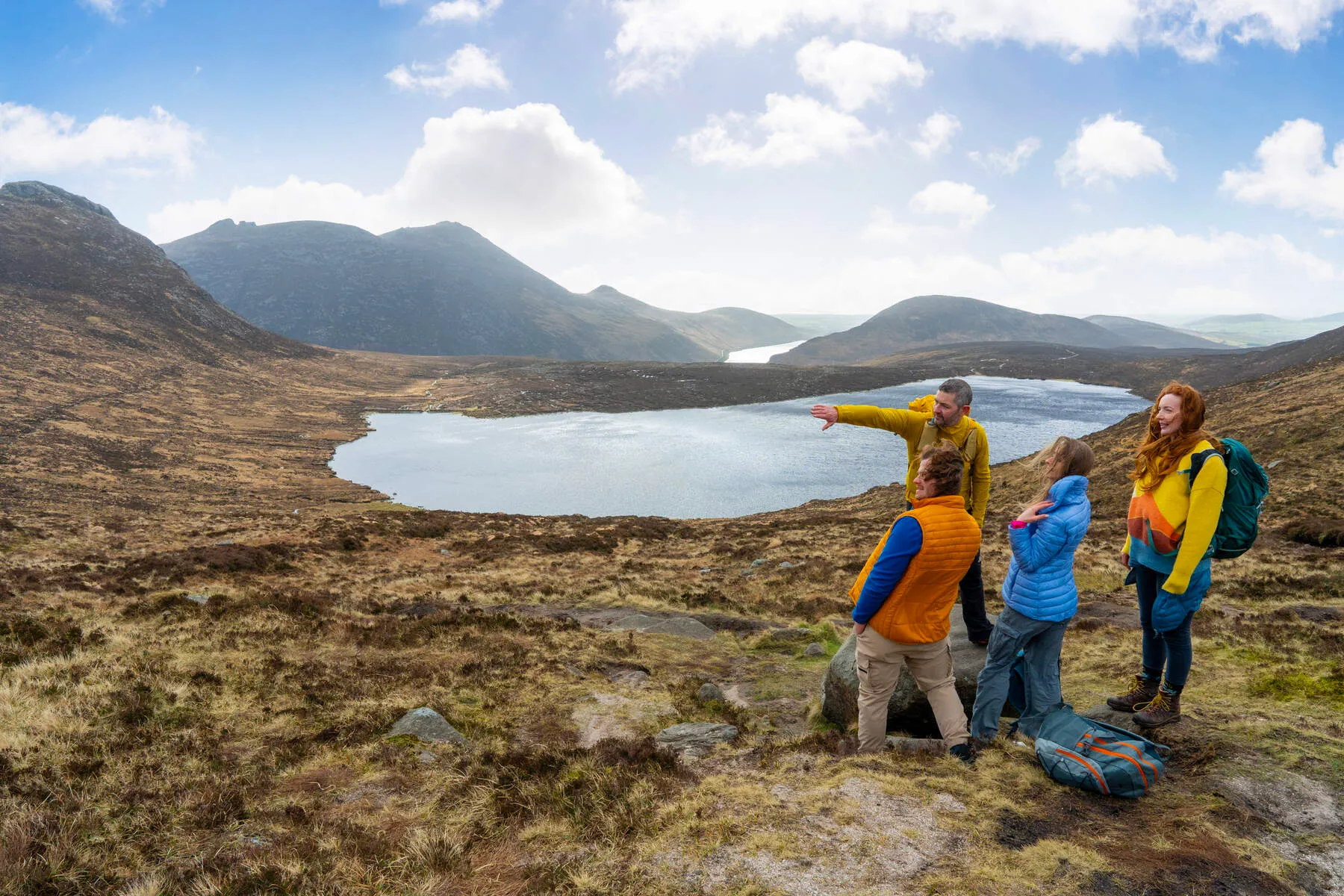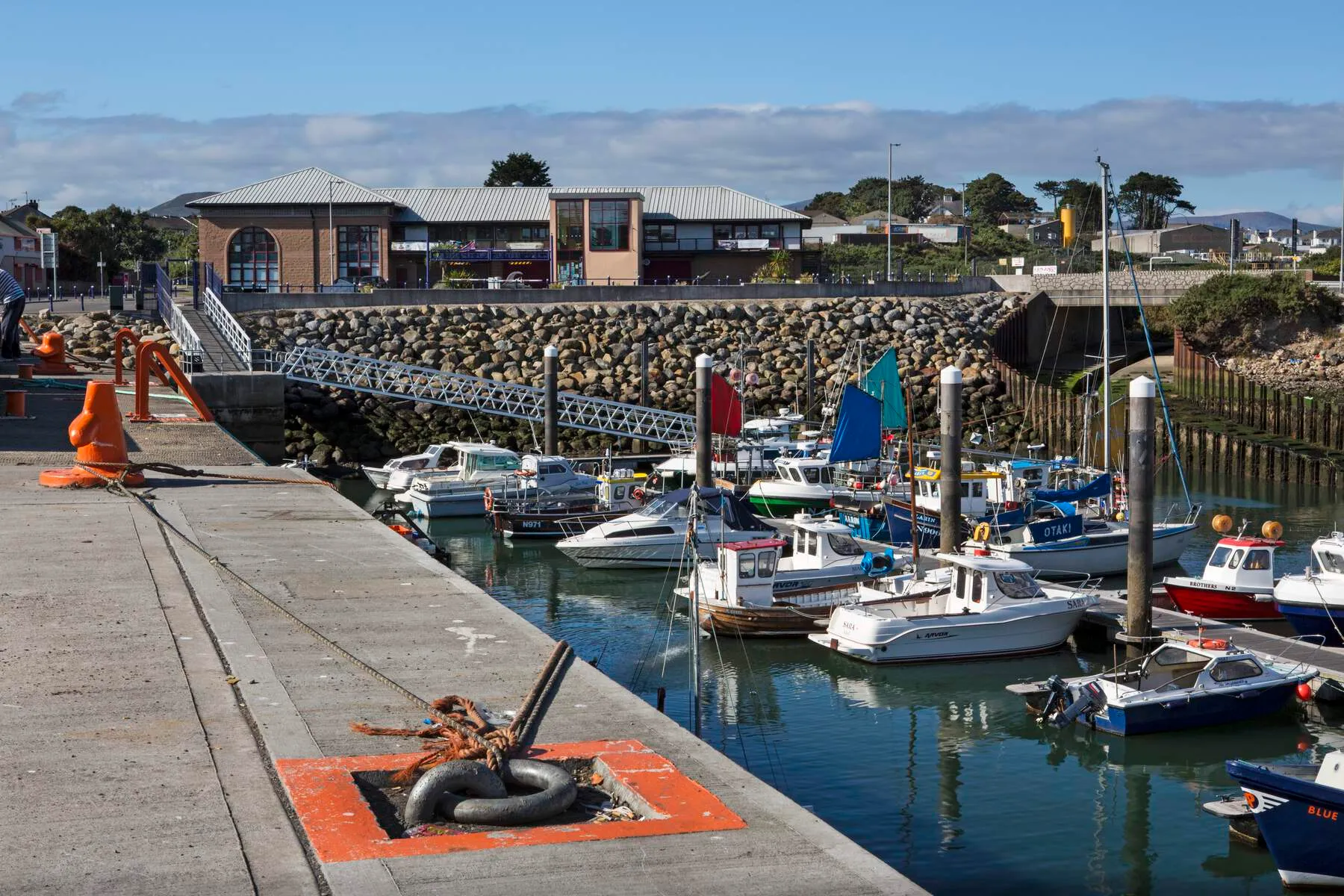Kilkeel, County Down, is where the Mountains of Mourne slope down to meet the Irish Sea, crafting a town steeped in maritime grit and pastoral beauty. Founded on the Gaelic "Cill Choal" (The Church of the Narrow Place), its story unfolds at the crossroads of sea, stone, and resilience. This coastal gem thrives as Northern Ireland's premier fishing port, with Kilkeel Harbour humming to the rhythm of king prawn boats and a fleet older than its 19th-century quays. Wander Widows Row, a historic row of cottages built for families lost in an 1843 storm, and trace the legacy of fishermen etched into every cobblestone. The Nautilus Centre nods to this heritage with its maritime tales, while St. Colman's Roman Catholic Church - a Gothic masterpiece - stands guard over a graveyard holding medieval secrets like the "wart well" and defaced crosses.
Step beyond town, and the Mourne Mountains rise as an Area of Outstanding Natural Beauty, their peaks whispering through Silent Valley Reservoir or along the Kilkeel Riverwalk. Here, granite trails lead to windswept beaches where Carlingford Lough mirrors the slopes, and coastal winds fuel surfing or a quiet picnic on Nicholsons Strand. Whether you're tracing the ghostly echoes of "The Maid of the Sweet Brown Knowe" ballad or savoring fresh seafood at the harbour's edge, Kilkeel cradles adventure and history in its narrow, sunlit lanes - a place where every wave carries a story, and every mountain peak promises another.
Jump to section:
Things to See and Do

Kilkeel Harbour
Thriving fishing harbor with king prawn exports and scenic night views. Operational since the mid-1800s, home to Northern Ireland's largest fleet.
St Colman's Roman Catholic Church & Graveyard (since 14th Century)
Built in 1879 on a site from the 14th century, featuring a Gothic design and archaeological Kistavaen burial site. Includes an historic defaced medieval cross and 'wart well,' symbolizing Kilkeel's heritage.
Widows Row
Historic row of cottages built for widows of fishermen lost in an 1843 storm. Symbolizes the town's resilience and maritime history.

Silent Valley Reservoir
Scenic reservoir beneath the Mourne Mountains, forming part of the Mourne Wall Challenge. Offers dramatic mountain vistas and water activities like kayaking.
The Nautilus Centre
Maritime heritage hub with multimedia exhibits, a café, retail space, and stunning harbor views. Established in 1997 overlooking the inner harbour basin.
Lower Square
Public square featuring the 'Narrows Journey' sculpture and Parochial Hall (opened in 1958). Built in 1997 to reflect Kilkeel's heritage.

Mourne Maritime Visitor Centre
Educational center exploring Kilkeel's fishing and maritime heritage through exhibits on boat maintenance and local industry.
Kilmorey Square
Historic square housing the old Court House and other notable buildings, showcasing Kilkeel's architectural legacy.
Alfred Eadie Hall/Kilkeel Presbyterian Hall
Former Moravian Church built in 1832. Now a community hall with an inscription on its foundation stone: 'Church of the United Brethren.
The Knitting Factory
Historic building erected in 1889 as St Colman's National Schools. Now a versatile community venue reflecting Kilkeel's educational history.
Manus's Lane
Upgraded fishermen's shortcut established in 1999, connecting the town center to Kilkeel Harbour and offering coastal views.
Nicholsons Strand Beach
Sandy beach 2.7 miles from Kilkeel with panoramic Mourne Mountain vistas. Backed by caravan parks but lacks facilities.
Kilkeel Riverwalk
10-minute scenic walkway established in 1998, offering river and coastal views along the route to Kilkeel Harbour.
Getting There
By Car
Kilkeel is located in County Down, Northern Ireland, and can be reached via the A2 or A25 roads. From Newry, take the A2 towards Warrenpoint and then follow signs for Kilkeel. The journey from Newry to Kilkeel takes around 40-50 minutes by car, depending on traffic conditions. From Belfast, the drive to Kilkeel takes approximately 1 hour and 30 minutes.
By Bus
There are regular bus services from nearby towns and cities, such as Newry and Belfast, to Kilkeel. The journey from Newry to Kilkeel by bus can take around 40-50 minutes. You can visit the Translink website at www.translink.co.uk or call them on 028 90 66 66 30 for more information on bus routes and schedules.
By Air
The nearest airports are George Best Belfast City Airport (BHD) and Belfast International Airport (BFS), both located in Northern Ireland. From George Best Belfast City Airport, Kilkeel is approximately 45 miles away. You can rent a car or take a taxi or bus from the airport to get to Kilkeel.
By Train
While there is no train service directly in Kilkeel, the nearby towns of Newry and Ballynahinch offer railway connections for those looking to travel further afield, including services to Belfast and Dublin. From Newry or Ballynahinch, you can take a bus or taxi to get to Kilkeel.
Events & Festivals 2025
There are currently no events listed. If you would like to add an event, please contact us.
History
Kilkeel's history dates back to the 11th century, with references to it as a Christian settlement. The town's name originates from the old church overlooking the town, "Cill Chaoil", meaning "church of the narrow". This church was built in 1388 and dedicated to Saint Colman of Mourne. By the 1600s, the church had been rebuilt, and later it was used as a school before being abandoned.
The cemetery attached to the church was used for burials until 1916, with the last burials being victims of a collision between two steamers in Carlingford Lough. Kilkeel grew slowly from a small village to a town by the late 1700s, with the earliest recorded dates including a kerbstone inscribed 1772 and a second story arch window in Newry St inscribed 1790.
In 1659, the majority of inhabitants were Catholic, but by 1901 this had decreased to half, with Presbyterians making up 60% of the remainder. The town's layout was already established by 1777, with five main streets. A significant event in Kilkeel's history was the establishment of the Kilkeel Poor Law Union in 1839, which covered an area of 127 square miles and included a workhouse built in 1840-1.
The workhouse was designed to accommodate 300 inmates and cost £4,050 to construct. During the famine in the mid-1840s, a 40-bed fever hospital was erected, which still survives as part of Mourne District Hospital. The town's industrial tradition is evident in its fishing, farming, and granite quarrying industries. The harbour, which opened in the 1850s, serves a large fishing fleet and has undergone additions and improvements over the years.
Notable buildings in Kilkeel include the Mourne Presbyterian Church, completed in 1831, and the Church of St Colman, built in 1879. The town is also home to the Nautilus Centre, which showcases its fishing heritage. In recent times, Kilkeel gained recognition when Prince Harry was granted the title Baron Kilkeel in 2018, on the occasion of his marriage to Meghan Markle.